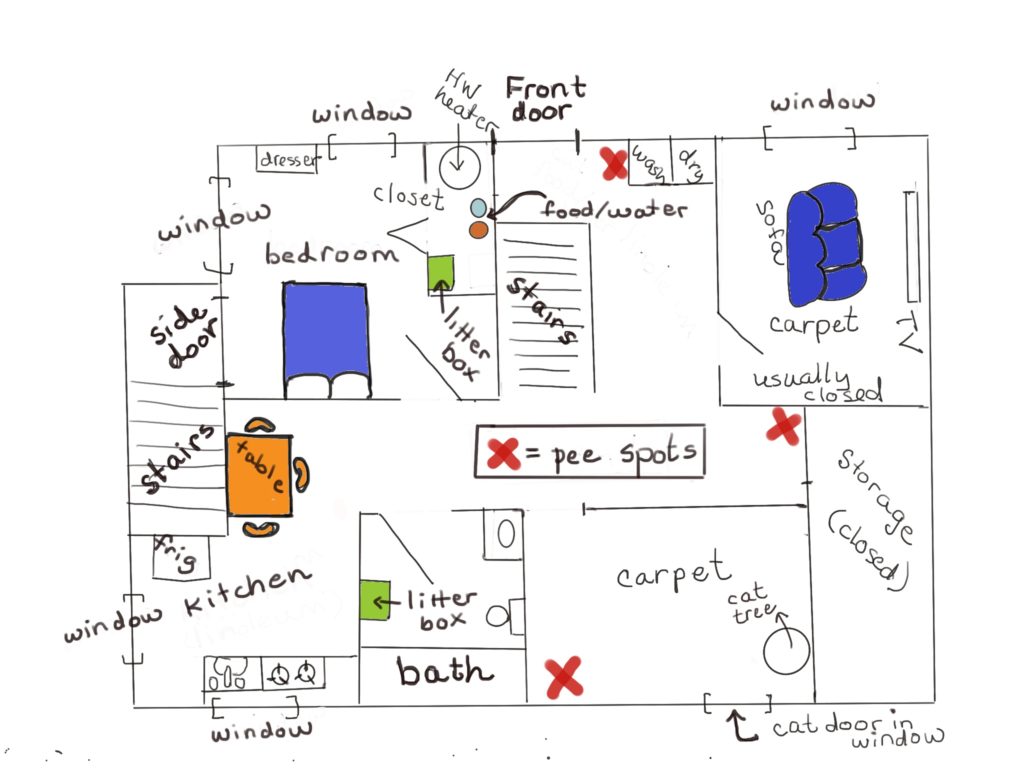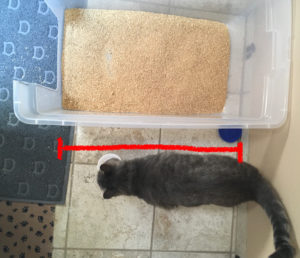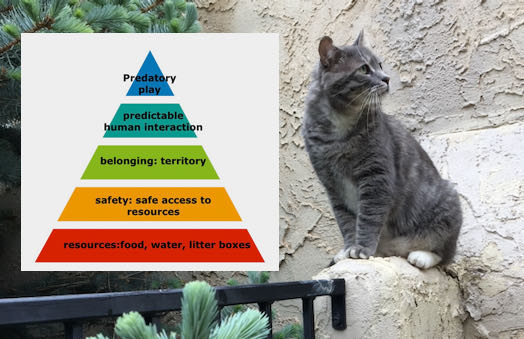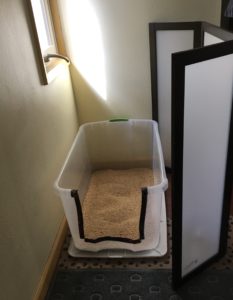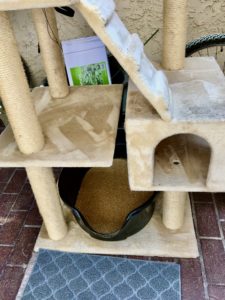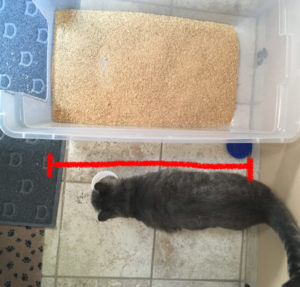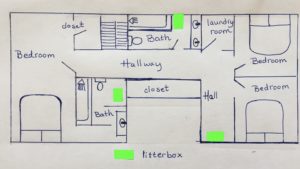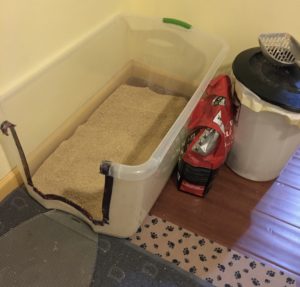 In celebration of Earth Day, this week’s post continues to focus on sustainable cat care. One of your cat’s essential resources is his litter box. Litter boxes are typically made of plastic but there are many choices of litter box filler. How can your choice of cat box filler help in reducing your cat’s carbon pawprint?
In celebration of Earth Day, this week’s post continues to focus on sustainable cat care. One of your cat’s essential resources is his litter box. Litter boxes are typically made of plastic but there are many choices of litter box filler. How can your choice of cat box filler help in reducing your cat’s carbon pawprint?
What makes a cat litter sustainable?
- Made from renewable resources
- High absorbency to reduce the amount needed
- Biodegradable
Reducing your cat’s carbon pawprint: sustainable cat litters
the scoop on kitty litter
Kitty litter is the brainchild of Edward Lowe. He began promoting fuller’s earth, an absorbent clay, as a cat box filler in 1947. Previously sand and ashes had been used as cat box filler – neither had the absorbency of the new clay product.
Clay cat litters are still with us. The original kitty litter was a non-clumping litter. In 1984, Thomas Nelson developed clumping cat litter using calcium bentonite. Clay materials dominated the cat litter market in 2021 with a share of 83.6% per Grandview Research
Clay Litters are not sustainable
These materials come from strip mines. Not only are they not renewable (at least in our lifetimes), they wreak havoc on the environment. They are not biodegradable. They are, however, relatively inexpensive.
Alternatives to Clay Litters
Other types of litters include those made from silica, recycled paper, wood, corn, peas, walnut shells, coconut husks, and grass.
Cat litter made from silica (crystal litters) and diatomaceous earth also must be mined. Diatomaceous earth is the fossilized remains of tiny aquatic organisms called diatoms – again, these litters are not renewable and not sustainable.
Recycled Paper
Litters made from recycled paper come from sustainable sources. However, some paper litters are not very absorbent and have to be changed frequently. This may contribute to increased mass in a landfill. Paper is biodegradable.
Clumping or non-clumping?
Clumping litters make it easier to scoop the litter box frequently (at least once a day!) The clumping litter sticks to the waste and keeps it from contaminating the remaining litter. It more likely that you will dump non-clumping litter more frequently because the soiled litter with mixes the non-soiled litter. Using non-clumping litter may increase the amount of litter in the landfill.
Plant-based Litters
Plant-based litters are made from corn, peas, wheat, wood, and even tofu by-products. Starch and plant fibers such as guar gum make these litters clump. These litters tend to be lighter, less dusty and more absorbent than clay litter and are biodegradable. They are unfortunately more expensive than the old clay standby but they are sustainable.
- You can grow more plants to produce more litter.
- The growing and harvesting methods do not damage the environment as much as strip mining.
- Plant-based litters are more absorbent than clay and less plant-based litter is needed for the litter pan.
A Better Mousetrap?
The Tidy Cat Breeze system uses zeolite pellets on a grate with a disposable pad underneath to catch liquid waste. Per the manufacturer, the pad is changed every week and the pellets monthly.
Zeolite is another mined material so loses some marks in sustainability although some people wash and reuse these pellets. This can extend the life of the pellets by a few months. The absorbent pad is plastic-backed so this is more plastic to go in the landfill. Another downside to this system is you may have to train your cat to use it – cats prefer softer finer particles in their litter.
litter in the landfill
Disposal options for cat litters include landfills, flushing down the toilet, and composting.
- Clay litters cannot be flushed down the toilet or composted.
- Even biodegradable litters may not degrade much in a landfill.
- Although much of the plant-based products can be flushed, there are the risks of clogged plumbing and introduction of pathogens into the water supply.
- These litters can be composted although there are concerns about parasites and bacteria from decomposing pet waste.
Composting cat litter
This is a controversial topic. Although plant and paper-based soiled cat litters can be composted, home compost piles do not get hot enough to kill pathogens so you certainly do not want to use composted cat litter on vegetable gardens.

Reducing Your cat’s carbon pawprint using sustainable cat litter
As the sun sets on 2023 Earth Day, here are some conclusions:
- Clay and other mineral based cat litters come from limited natural resources and are not sustainable.
- Paper and plant-based litters come from renewable resources, are biodegradable, and more sustainable.
- Paper and plant-based cat litters absorb more liquid than clay litters so not as much litter is needed in the litter tray.
If you are interested in reducing your cat’s carbon pawprint, consider trying the paper and plant-based litters.

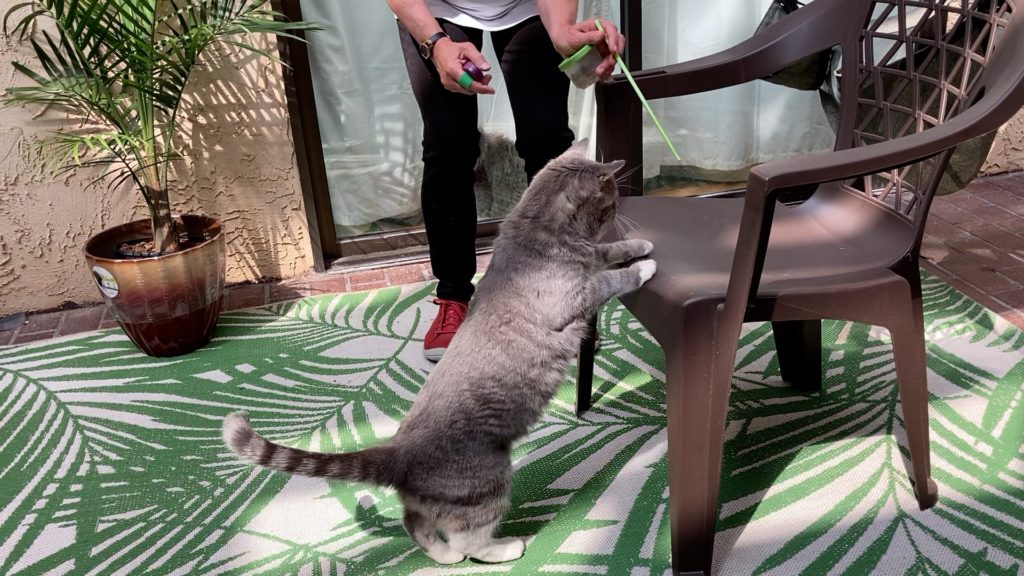
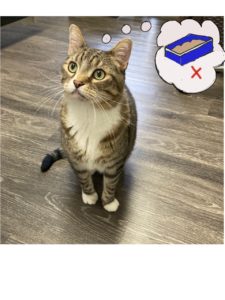
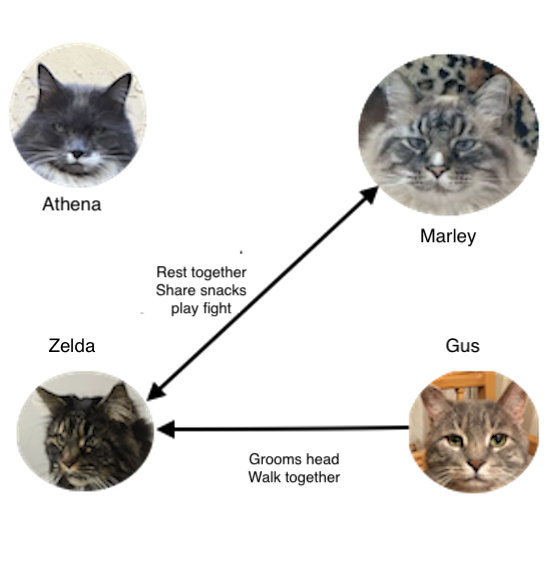
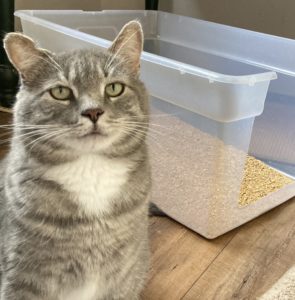 What can you do when your cat thinks outside the box?
What can you do when your cat thinks outside the box?